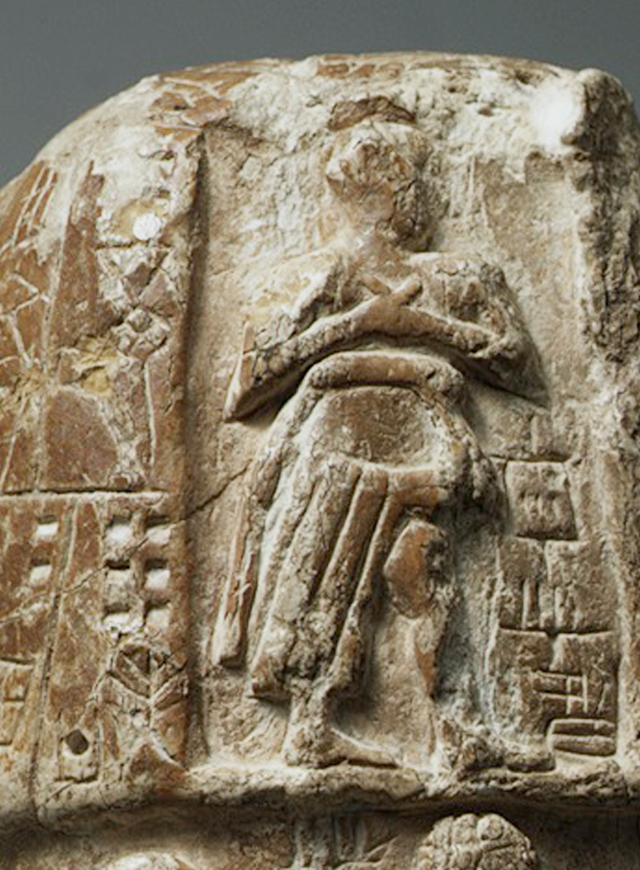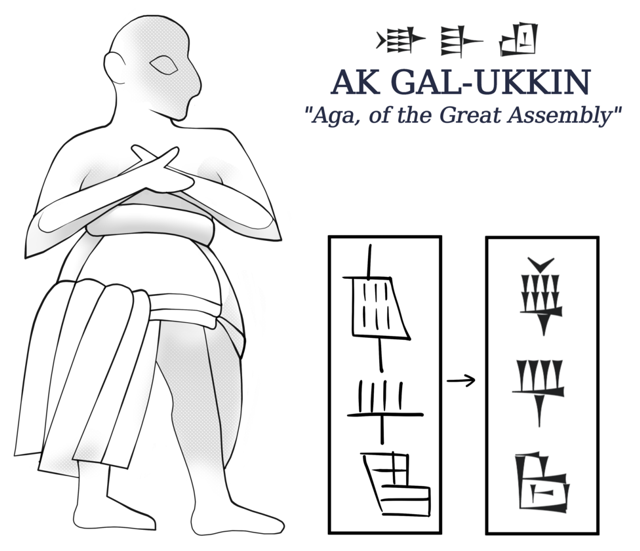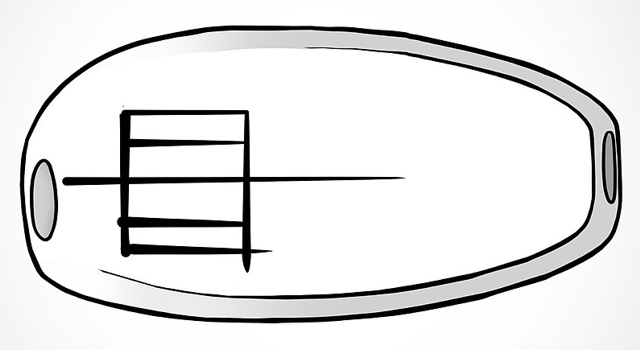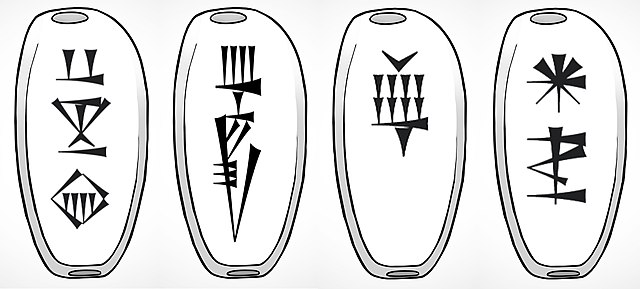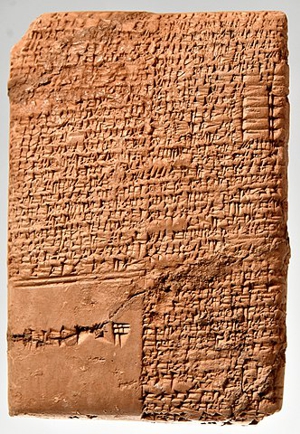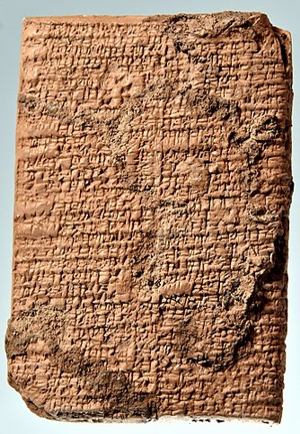
| AGGA
Aga depicted on the Stele of Ushumgal as official of the Great Assembly of Umma King
of the First dynasty of Kish
Regnal titles of Agga : King of Kish, Ruler of Sumer, Governor of Umma and Governor of Zabala
Aga / Agga commonly known as Aga of Kish, was the twenty-third and last king in the first dynasty of Kish during the Early Dynastic I period. He is listed in the Sumerian King List and many sources as the son of Enmebaragesi. The Kishite king ruled the city at its peak, probably reaching beyond the territory of Kish, including Umma and Zabala.
The Sumerian poem Gilgamesh and Aga records the Kishite siege of Uruk after its lord Gilgamesh refused to submit to Aga, ending in Aga's defeat and consequently the fall of Kish's hegemony.
Name
:
AK was likely an Early Dynastic spelling of Akka, (the past particle of the Sumerian verb "to make"). The name in question is to be interpreted as a Sumerian genitival phrase, Akka probably means "Made by [a god]" (ak + Divine Name.ak).
Distinct forms attested of Aga's name
Historical king :
Lineart from Aga on the Stele of Ushumgal, his name appears as the Great Assembly Aga is attested in two compositions of an historiographical nature, the Sumerian King List and the Tummal Inscription, both as the son of Enmebaragesi, who has been verified through archaeological inscriptions; these sources may confirm Aga and Gilgamesh's existence. Aga's name appears in the Stele of Ushumgal and the Gem of King Aga, both showing influence over Umma.
Enmebaragesi,
-
Old Babylonian tablet Tummal Inscription (1900-1600 BCE) Gem of King Aga
Gem of unknown provenance mentioning Ak, an alternate naming for Aga. The gem has four columns of text on its faces, and reads "For Inanna, Aga King of Umma" (dinanna ak lugal ummaki) According to the Sumerian King List (ETCSL 2.1.1), Kish had the hegemony of Sumer where he reigned 625 years, succeeding his father Enmebaragesi to the throne, finally ending in defeat by Uruk.
The use of the royal title King of Kish expressing a claim of national rulership owes its prestige to the fact that Kish once did rule the entire nation. His reign probably covered Umma, and consequently Zabala, which was a dependent of it in the Early Dynastic Period; this can be supported on his appearance in the Gem of King Aga, where he is mentioned as the king of Umma. There is some scant evidence to suggest that like the later Ur III kings, the rulers of ED Kish sought to ingratiate themselves to the authorities in Nippur, possibly to legitimize a claim for leadership over the land of Sumer or at least part of it. Archeological evidence from Kish shows a city flourishing in ED II with its political influence extending beyond the territory, however in ED III the city declined rapidly.
Gilgamesh
and Aga :
There
are wells to be finished.
-
Aga commanding Uruk to work for the irrigation of Kish.
Then Gilgamesh leans to the wall; his divine radiance does not frighten Aga but is beheld by the Kishite army. Enkidu and the guruš take advantage of the confusion of the enemies and advance through them; Aga is captured in the middle of his army. Gilgamesh addresses Aga as his superior, remembering how Aga saved his life and gave him refuge; Aga withdraws his demand and begs his favor to be returned. Gilgamesh, before Utu, sets Aga free to return to Kish.
Story of Gilgamesh and Aga
Story of Gilgamesh and Aga. Old Babylonian period. Sulaymaniyah Museum, Iraq
Story of Gilgamesh and Aga. Old Babylonian period. Sulaymaniyah Museum, Iraq
Replacement in the poem :
Since Gilgamesh addresses Aga denoting military relations between them in the past and indebtedness to him for saving his life, which leads to Gilgamesh being dependent on Aga previously, this conflicts with the assumption that he won a previous war against Kish.
Another theory is that since Enmebaragesi established the hegemony of Kish, defeating Aga would be less impressive than his powerful father, who therefore served the purpose of the hymn and portrays Gilgamesh as a mighty figure. Since Enmebaragesi was inserted to replace Aga, the hymn does not reflect a separate but rather one literary tradition from the tale.
Source :
https://en.wikipedia.org/wiki/Aga_of_Kish |
